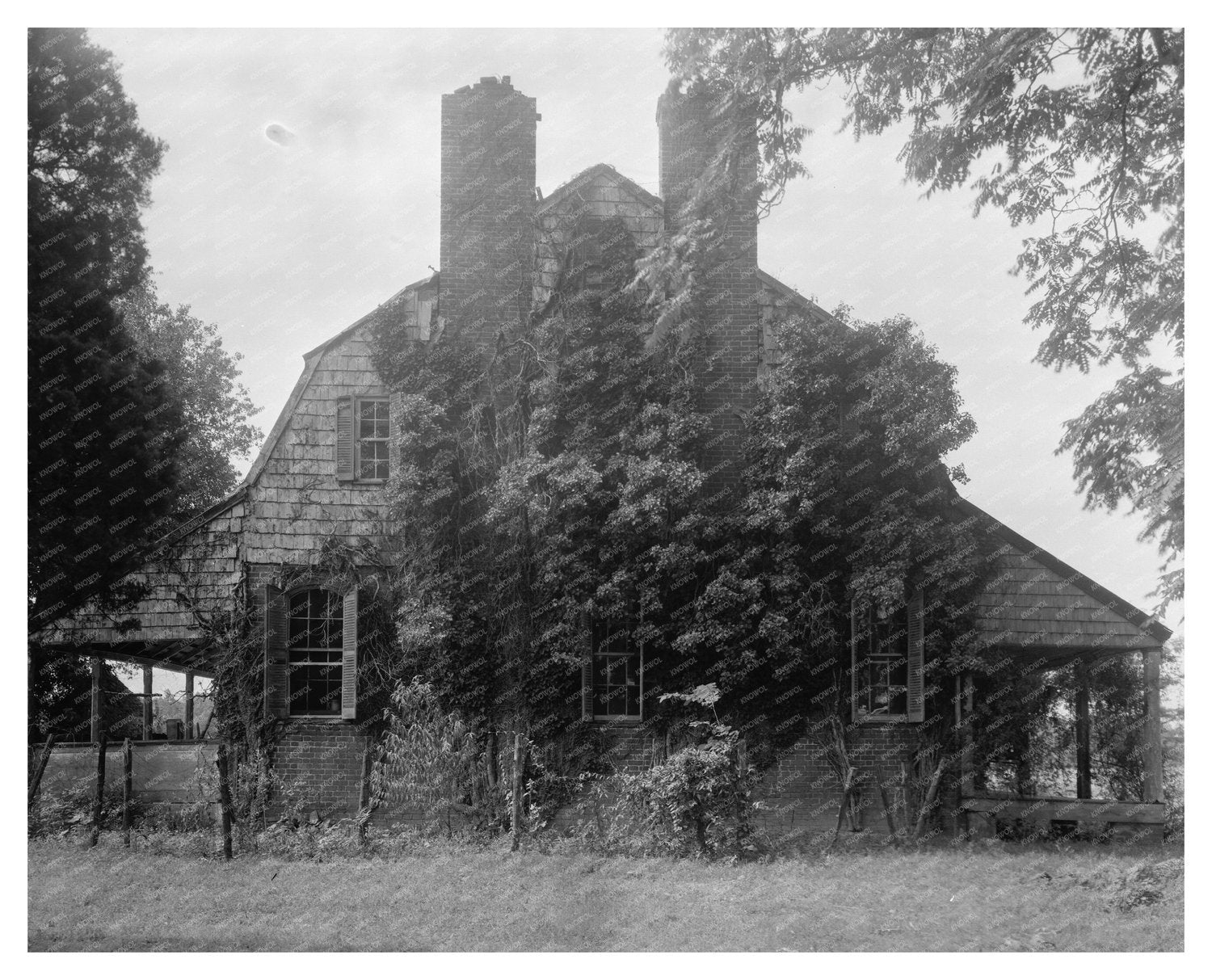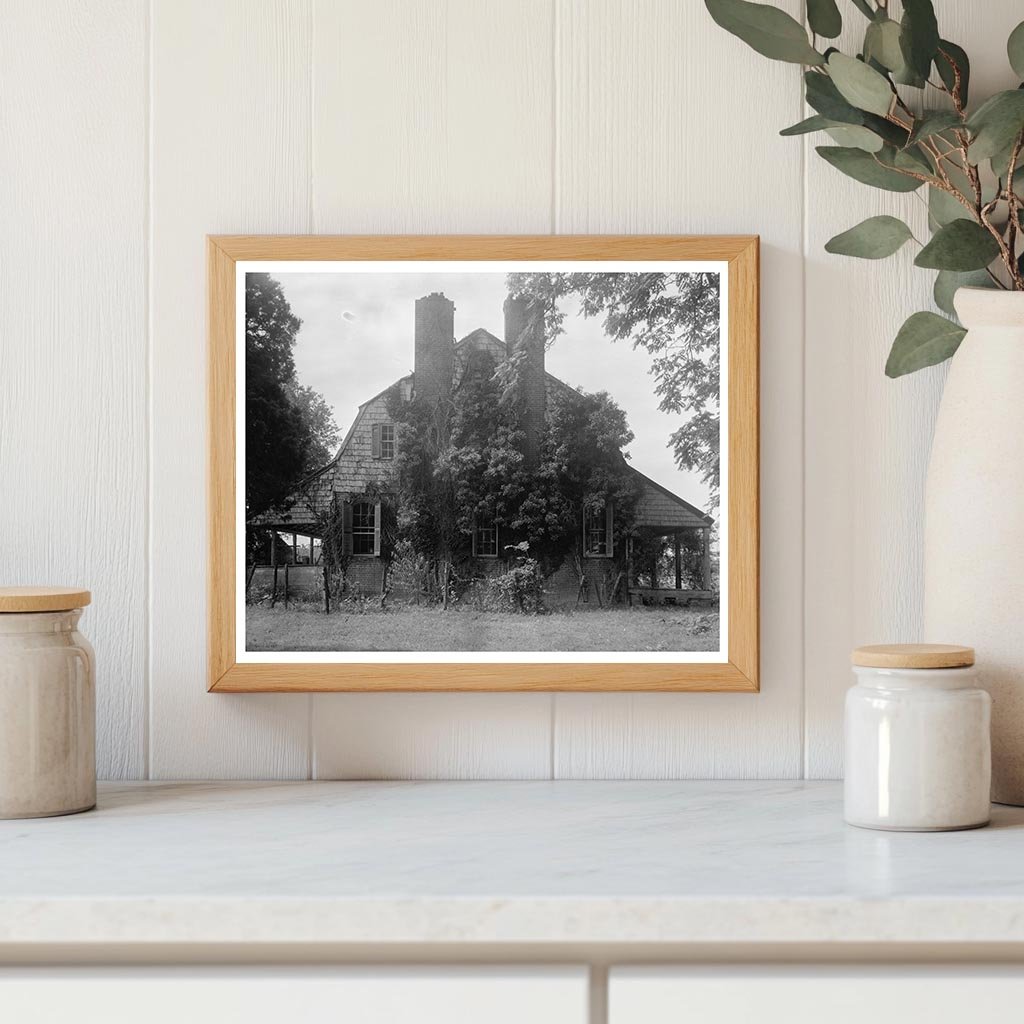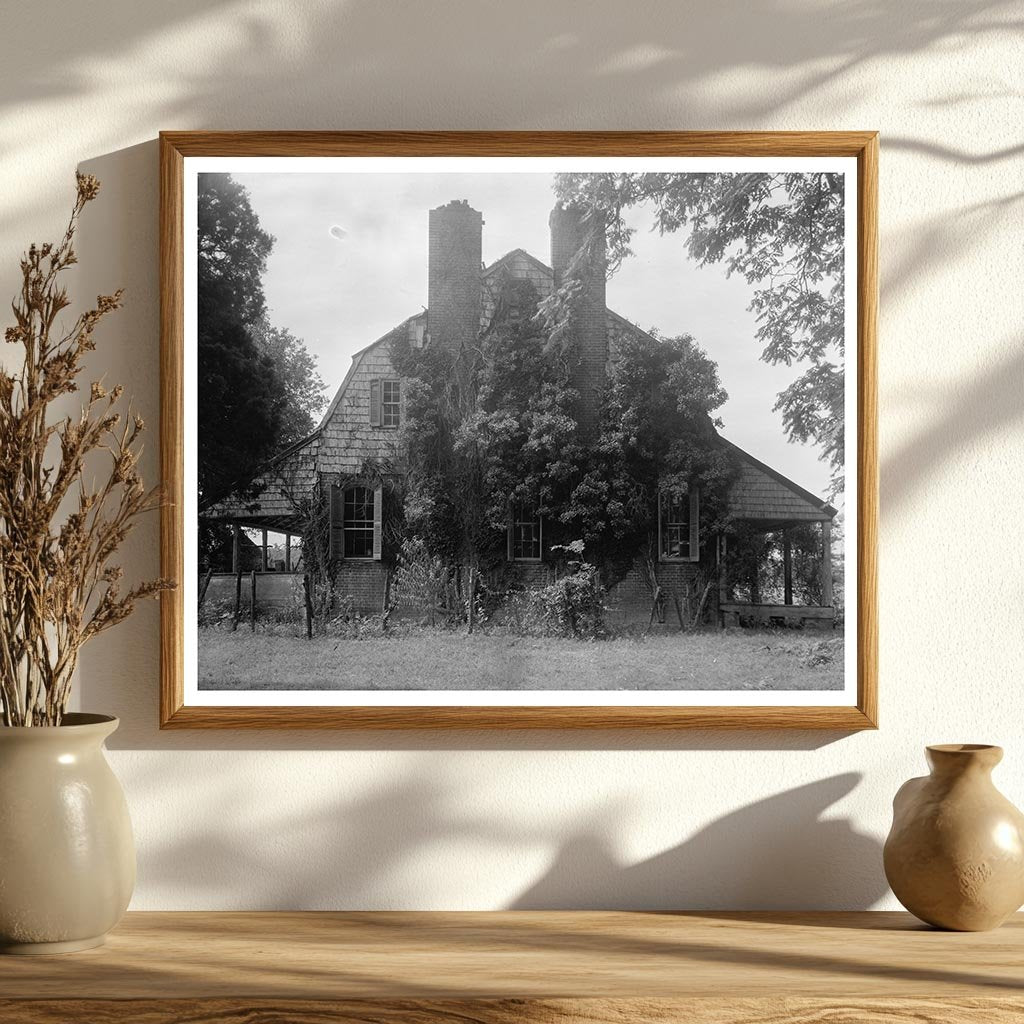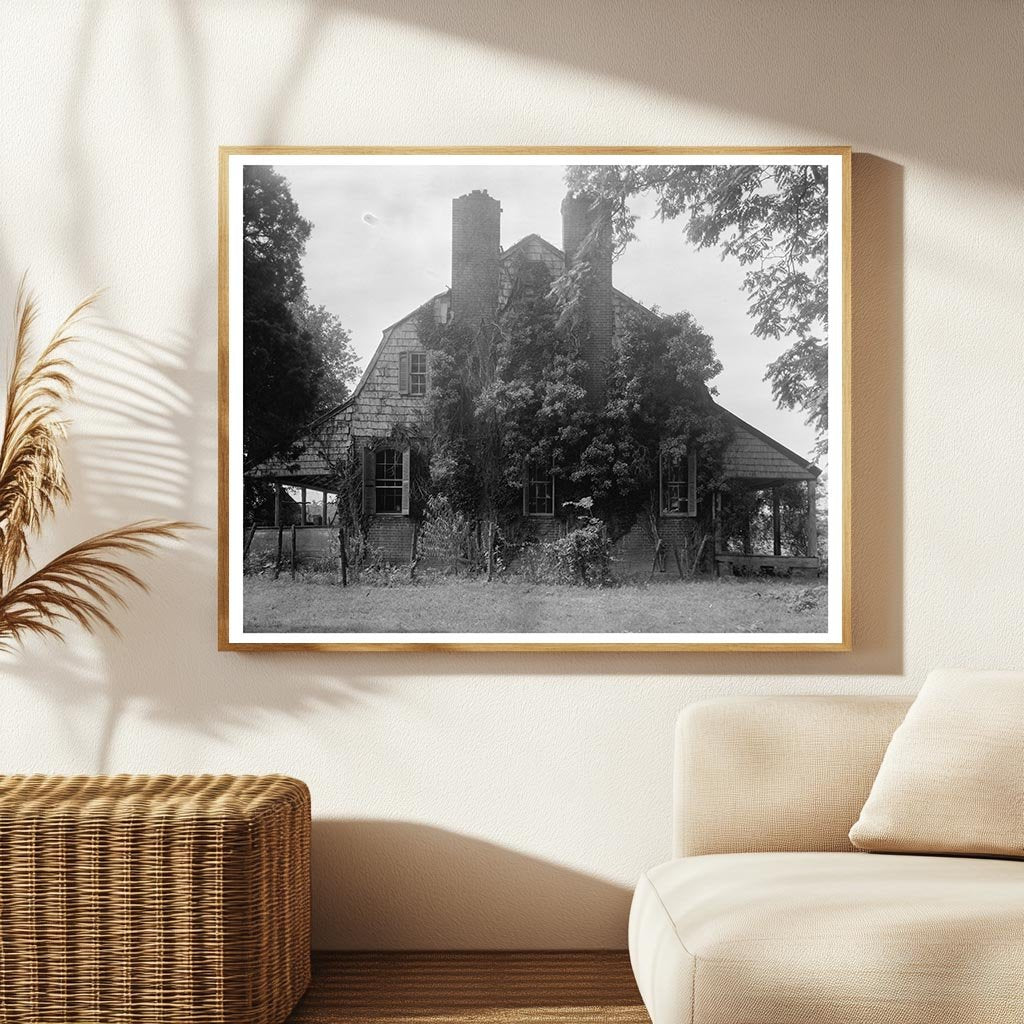



Historic 1645 Structure, Chaptico, MD - 1930s Photo
Frances Benjamin Johnston captured this vintage photograph in St. Marys County, Maryland, specifically in the vicinity of Chaptico. The image features a historic structure dating back to 1645, showcasing architectural elements typical of the period, such as gambrel roofs and prominent chimneys. The building is adorned with climbing vines, highlighting a connection to the natural landscape of the area.
Part of the Carnegie Survey of the Architecture of the South, this photograph serves as an important document of early American architecture. The survey aimed to systematically catalog significant structures throughout the southern United States, providing valuable insights into regional design and construction practices.
Johnstons work is preserved in the Library of Congress, where it contributes to our understanding of Marylands architectural heritage. This photograph not only represents a specific moment in time but also reflects the enduring legacy of colonial architecture in the region.

Historic 1645 Structure, Chaptico, MD - 1930s Photo
